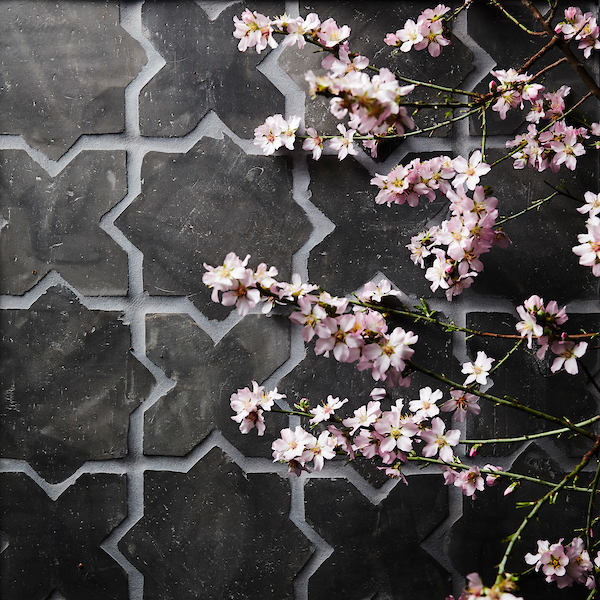Sarah Lonsdale is currently creative director at clé tile. But she’s a design writer and editor too, as well as co-founder of Remodelista and creator of the Remodelista Markets. The author of “Japanese Style” and “Foraged Fauna,” she’s also discovered an exquisite blackened clay and has taken a restored form of terracotta to create a new line of Belgian reproduction tiles for clé. To this eye, they’re reminiscent of the granite pavers on the Piazza della Rotonda in Rome. So A + A recently interviewed her via email:
What makes these tiles different?
These are made from earth and clay using French terracotta production methods. Different combinations of earth are cooked at varying temperatures, producing an array of colored terracotta – but we are particularly taken with our earthy Flemish black that completely transforms from a natural gray to an inky black depending on the grout used.
The tiles’ uses?
Anywhere: interior, exterior, wet areas, freeze-thaw
The intent of their design?
Although terracotta has an earthy, rustic image, it is product that develops a rich patina overtime that can give it a certain grandeur.
Your inspiration for their design?
We looked to Northern Europe with its alleyways and grand courtyards and low cloud-covered skies – in particular, the muted hues, gray patinas and refined rusticity of Belgium appealed.
Why Belgium?
I have been a long-time admirer of Vincent Van Duysen’s architecture and the fashion designer Dries Van Noten, as well as interior designer Axel Vervoordt. Their work is very elemental on one level but also has a magical grandeur to it.
The challenges in creating them?
Educating the client on the fact that the grout is what dictates the ultimate look and feel of this tile has been an educational process, but it is also what is particularly exciting about the product – its transformative nature.
What kinds of patterns do they lend themselves to?
The monochromatic black patterns almost have a more textural look than a pattern. The grout can either highlight the shapes by contrasting them, or it can be darker charcoal – matching the tile and disappearing.
We have also noticed that people are taking the star and cross pattern then creating an edged trim with the rectangles – that’s something we didn’t think of.
Commercial or residential installation?
Both.
For more, go here.
[slideshow id=1906]
Lead image by Laurie Frankel



